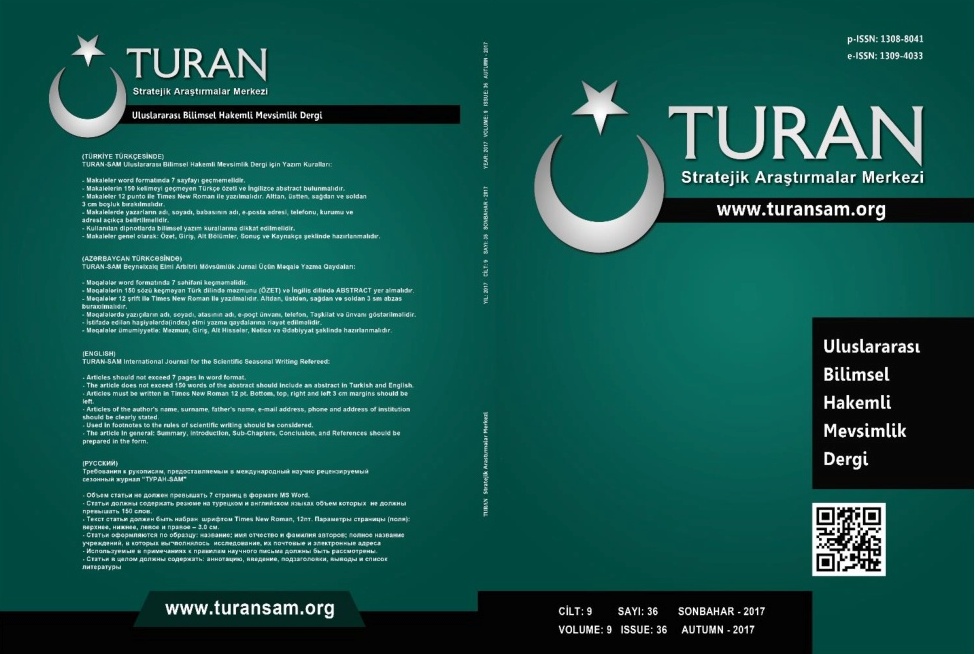Orta Asyadan Anadoluya Uzanan Yolda Bir Mezar Anıtı: Kümbed-i Aleviyan
A Grave Monument at the Way from the Middle Asia to the Anatolia: Gunbad-i Alawiyan
Author(s): Fatih TuranlıSubject(s): Museology & Heritage Studies, Architecture, Visual Arts, 6th to 12th Centuries
Published by: Sage Yayınları
Keywords: Iran; Great Seljuk; Tomb; Gunbad-i Alawiyan;
Summary/Abstract: Iran territory, which is not in the nature of Turks in Anatolia bridge has been a very important center. In particular, the most important structures in the Great Seljuk Turks, filled with monumental works of art in Iran have caused in these lands. For the first time during the Karahan’s met with Turkish Islam put forward a number of innovations in the architectural sense after this rotation. The Great Seljuk state this heritage they received from Karahan’s mosques, madrasas, caravanserais and the tomb structure in the basic form of the improved size for the first time a new team seeking to gradually Turkish and Islamic Art 11th and 12th century were revealed. The tomb architecture in Central Asia have built shrines Seljuk Turkish art to remain connected usually in the form of tents. After the return to a particular state Empire tombs have gained significant forms. Gunbadi Alawiyan in traditional forms with square-shaped building reflects the Seljuk tombs are rich and engaging a lot of attention with the sophisticated stucco. This study draws attention to the Great Seljuk tombs with decorations in Gunbad-i monuments Alawiyan will do a presentation.
Journal: TURAN-SAM
- Issue Year: 9/2017
- Issue No: 36
- Page Range: 731-742
- Page Count: 12
- Language: Turkish

